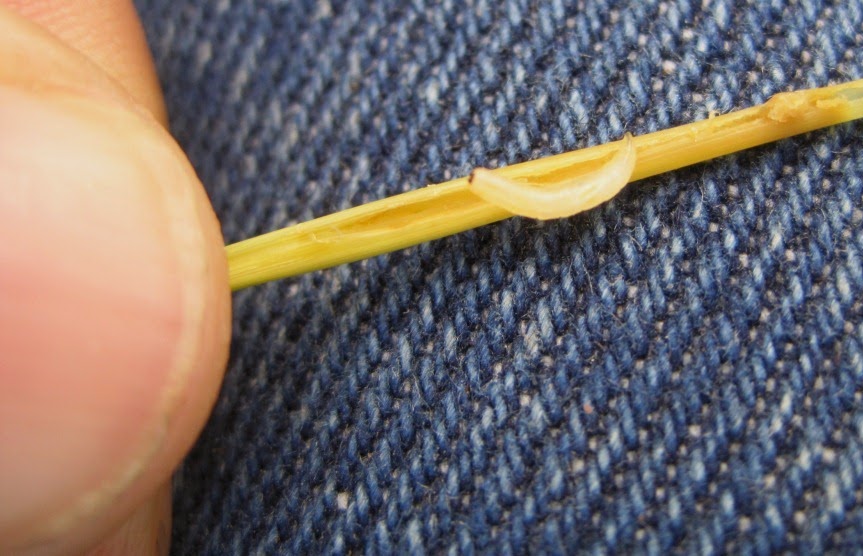Late this past year a new forage
insect that has been slowly making its way here from Georgia invaded
bermudagrass fields in Texas. In 2010,
entomologists in Georgia found the Bermudagrass Stem Maggot in hay fields and
since that time this Central and Southeastern Asia insect has been steadily
moving west.
Dr. Vanessa Corriher-Olson,
Extension Forage Specialist at Overton in East Texas found damage in July last
year in a number of East Texas coastal bermudagrass hay fields and she
identified the insect causing the damage as the Bermudagrass Stem Maggot
(BSM). In late August I was called to
come by some fields north of De Leon to see a problem and the damage was something
I had never seen. My first call was to
Dr. Allen Knutson, Extension Entomologist and after a few email pictures he
confirmed the damage as BSM.
The adult fly of the BSM lays its
eggs on bermudagrass leaves. Once the
eggs hatch, the larva or maggot goes into the stem and begins feeding on the
leaf tissue right at the uppermost node.
As a result of the feeding the top 2-3 leaves will die as you can see in
the picture.
After the leaves die the maggot
leaves the stem and goes into the soil to pupate. After pupating for 7-10 days the adult fly
emerges to lay a new round of eggs. It is estimated that if the infestation is
severe that over 80% of the tillers in a field can be affected.
The
field that I scouted north of De Leon, Texas had between 70-80% of the tillers
dead and the hay yield was going to be
severely affected by the maggot. The
producer immediately cut the field and then a following last cutting was not
damaged.
According to Dr. Dennis Hancock,
University of Georgia Extension Forage Specialist the damage appears to begin
toward the end of the first cutting through the middle of the second
cutting. In general the damage begins to
taper off as fall weather changes begin.
I was not able to find any damaged fields by late September.
What can we do? There is not a lot we know about this insect
and certainly not a lot of control measures.
Here is a list of things that can help you manage for BSM:
- The larva causes the damage by feeding inside the stem. Since the maggot is inside the stem, conventional insecticides will not touch them.
- The adult fly does not move far, in fact they only move about 10 feet in any single flight. The flies stay deep in the canopy unless disturbed so chemical control has to penetrate the canopy to be effective.
- If you see damage and are even within 10 days of harvest then harvest! When you harvest you will remove the maggot and help lower fly numbers.
- If you do make a harvest and will have maggots again then treatment is an option. Dr. Hancock has found that you can apply an inexpensive pyrethroid insecticide like Silencer. Silencer does not have a label for BSM but it is labeled for most insects in bermudagrass including armyworm and grasshoppers. Apply a pyrethroid when the grass is growing 7-10 days after harvest and then again 7-10 days later. The cost of the two treatments is easily justified by the forage yield saved!
- · Alicia, Coastal and Tifton 44 are the most susceptible since they are finer textured bermudagrasses. Tifton 85, which is a coarser grass, has shown to have fewer tillers damaged and so less yield loss.





